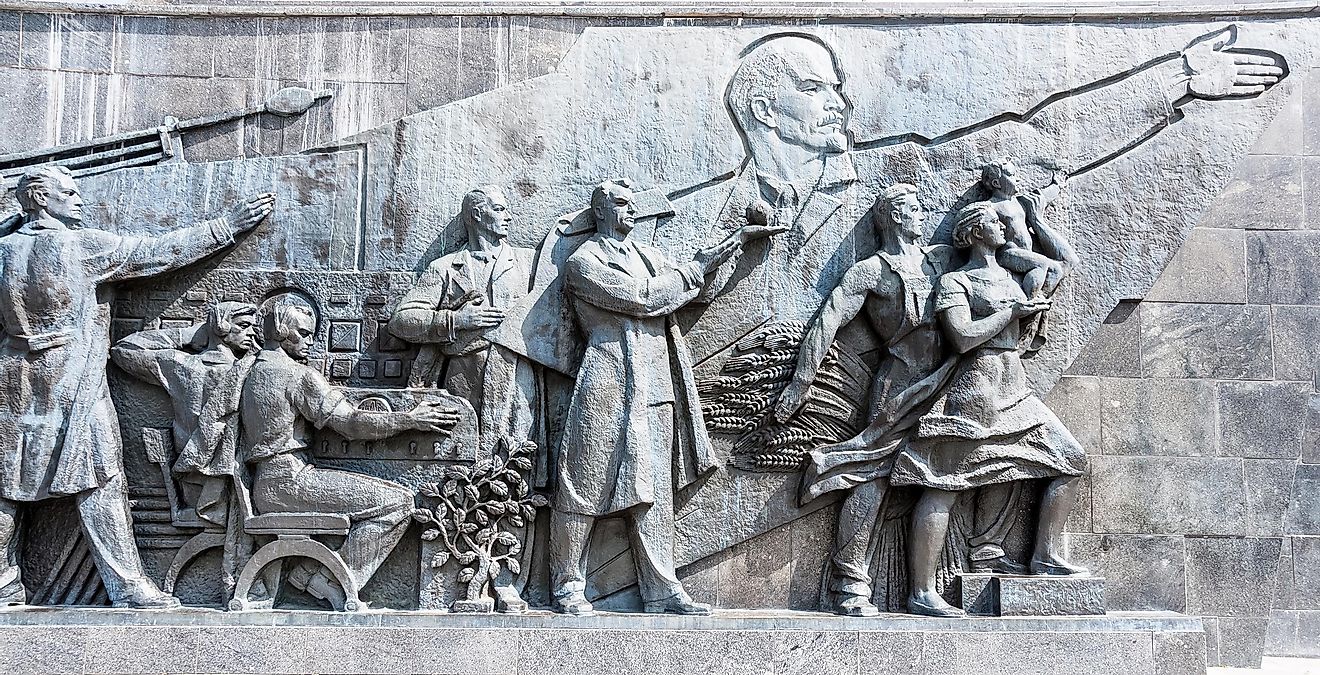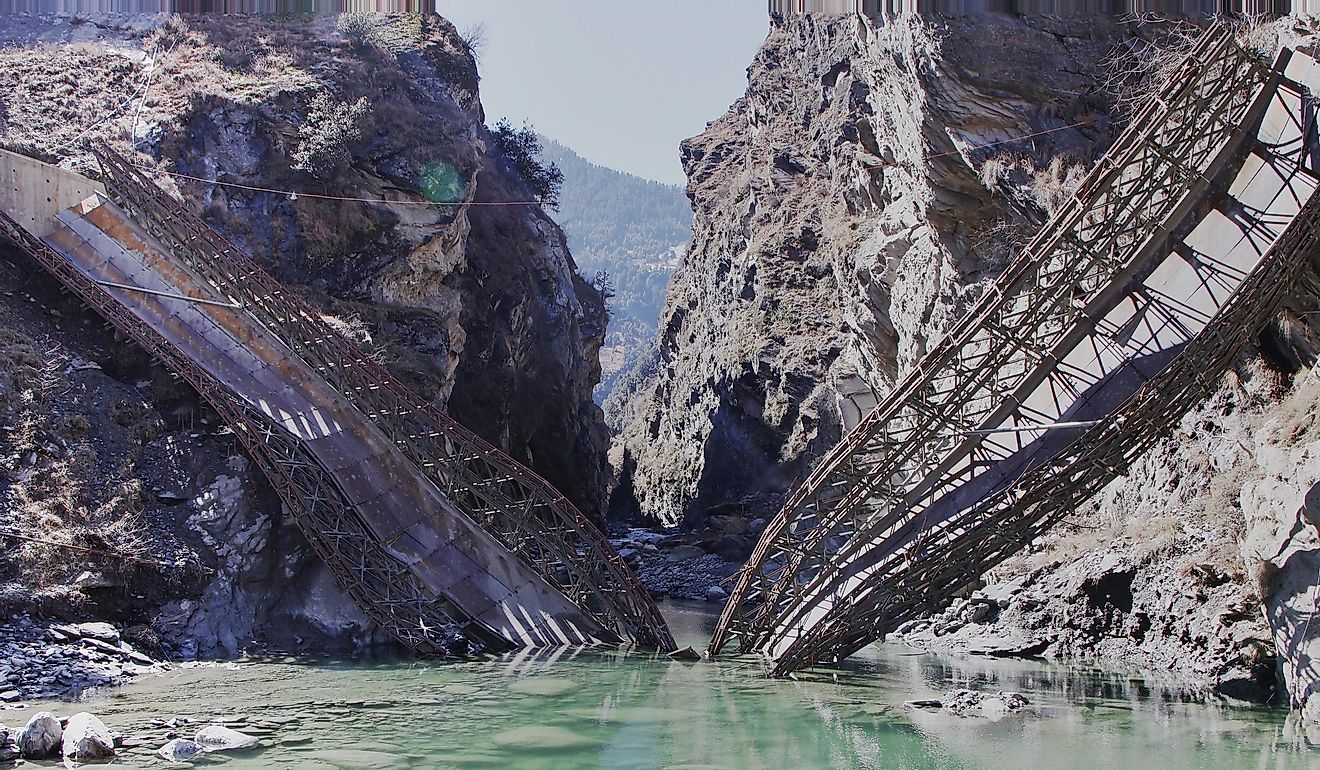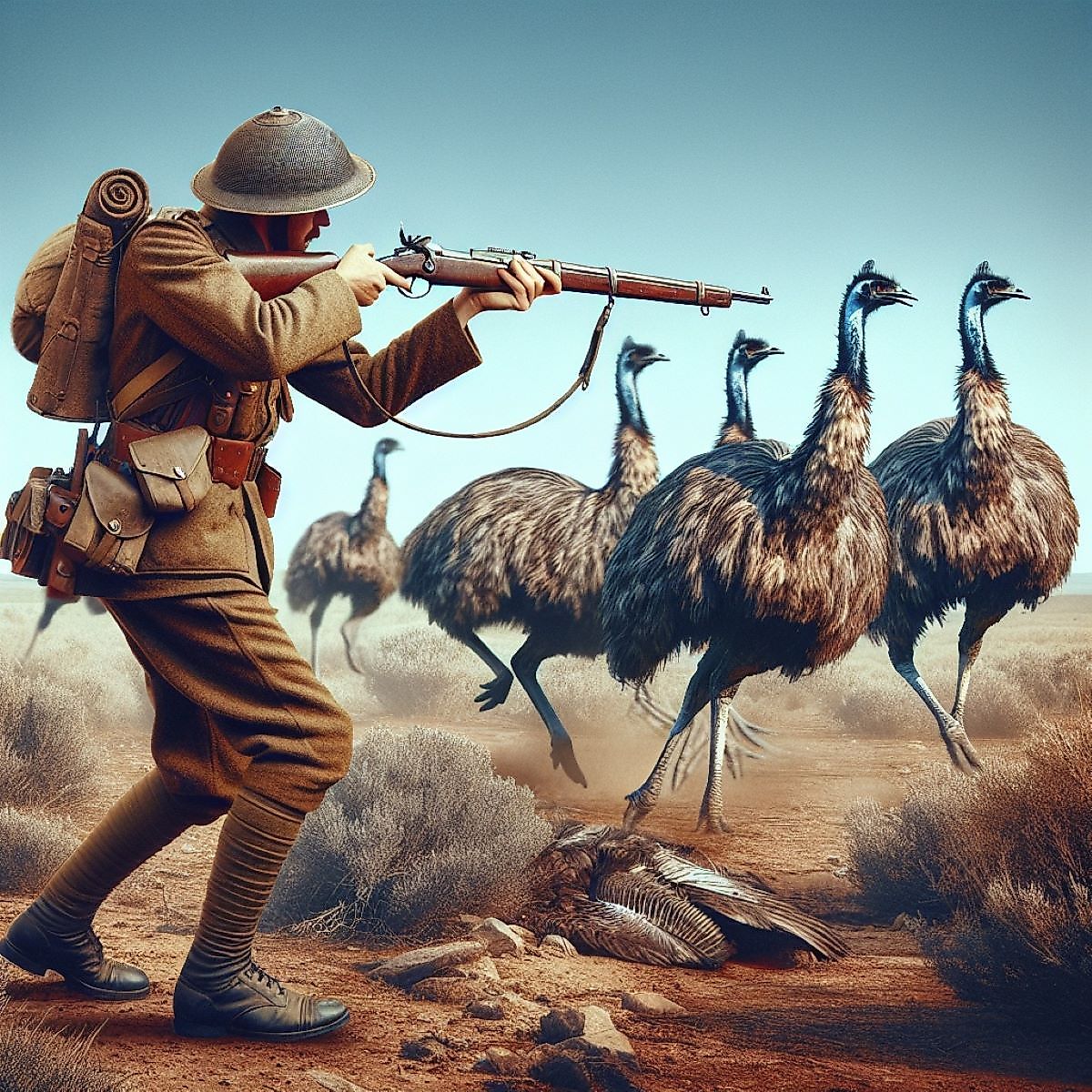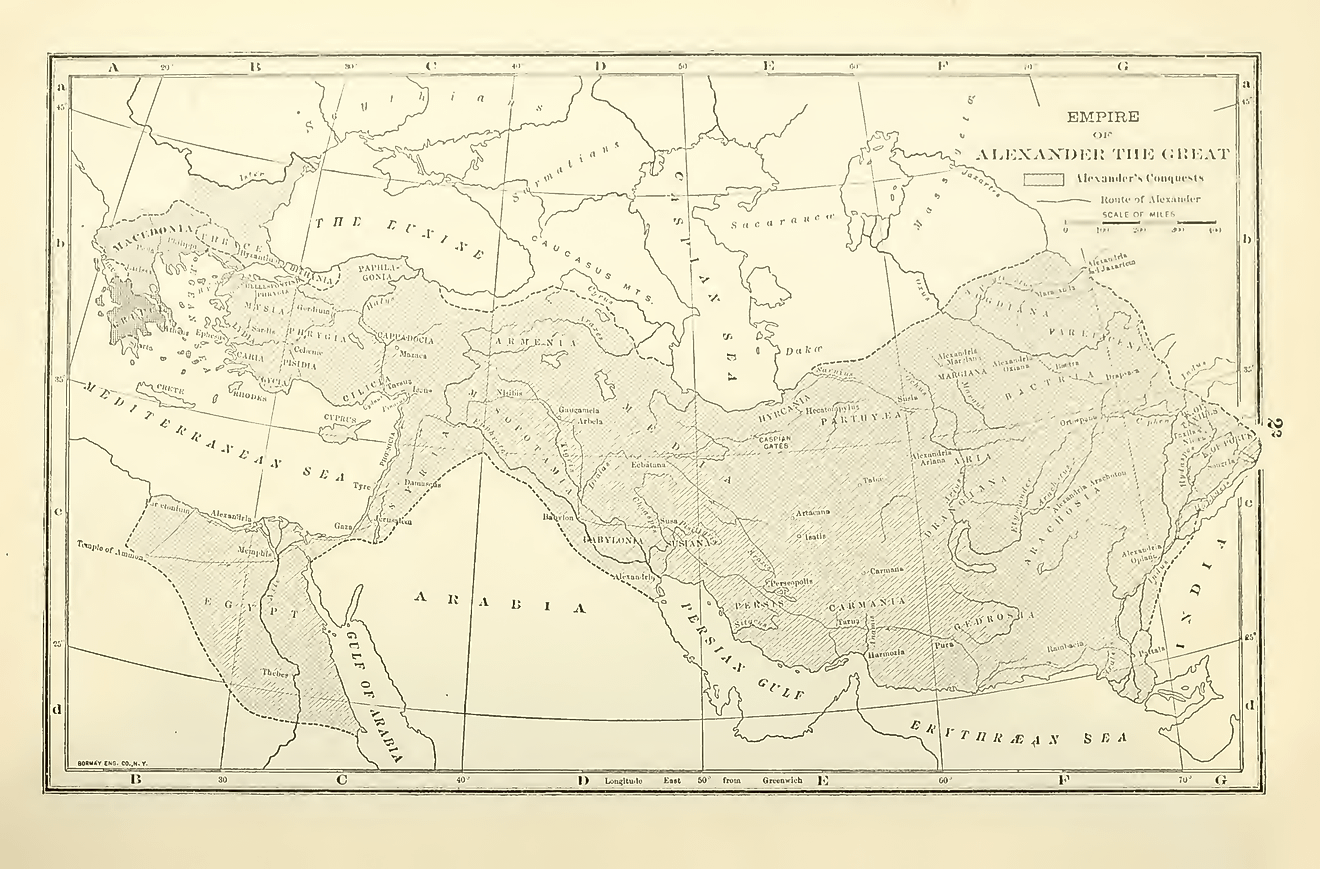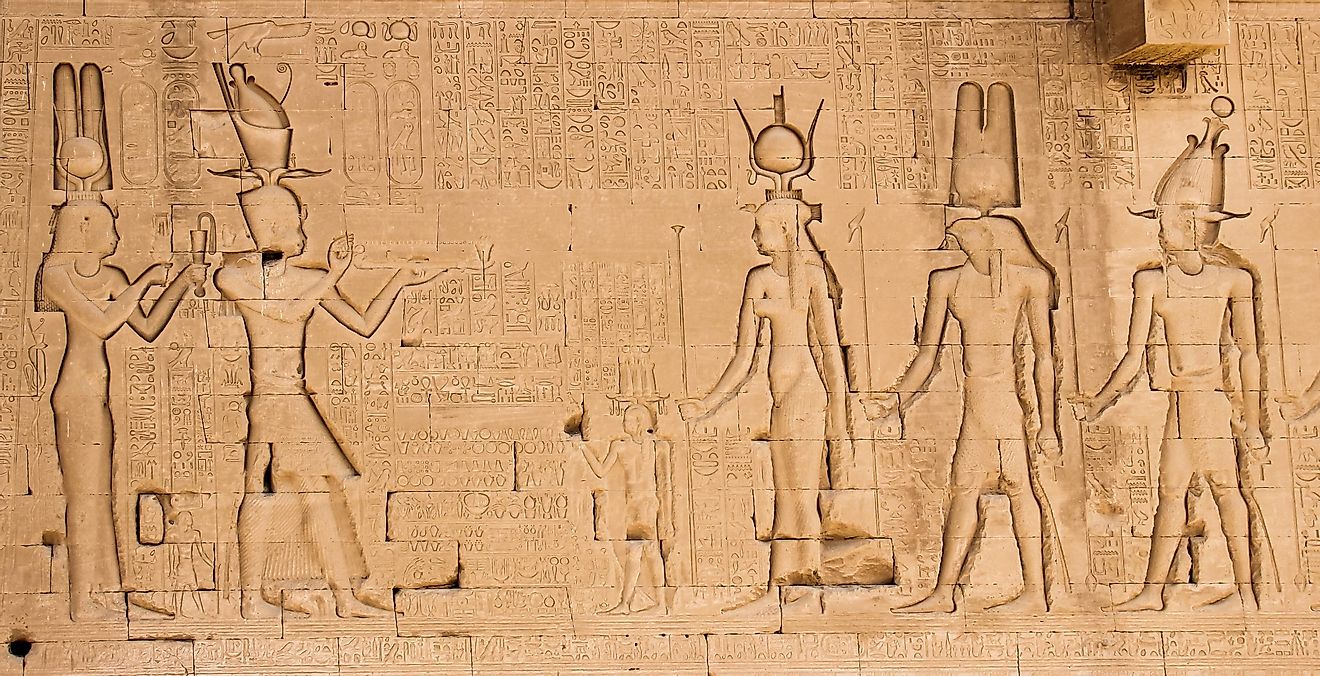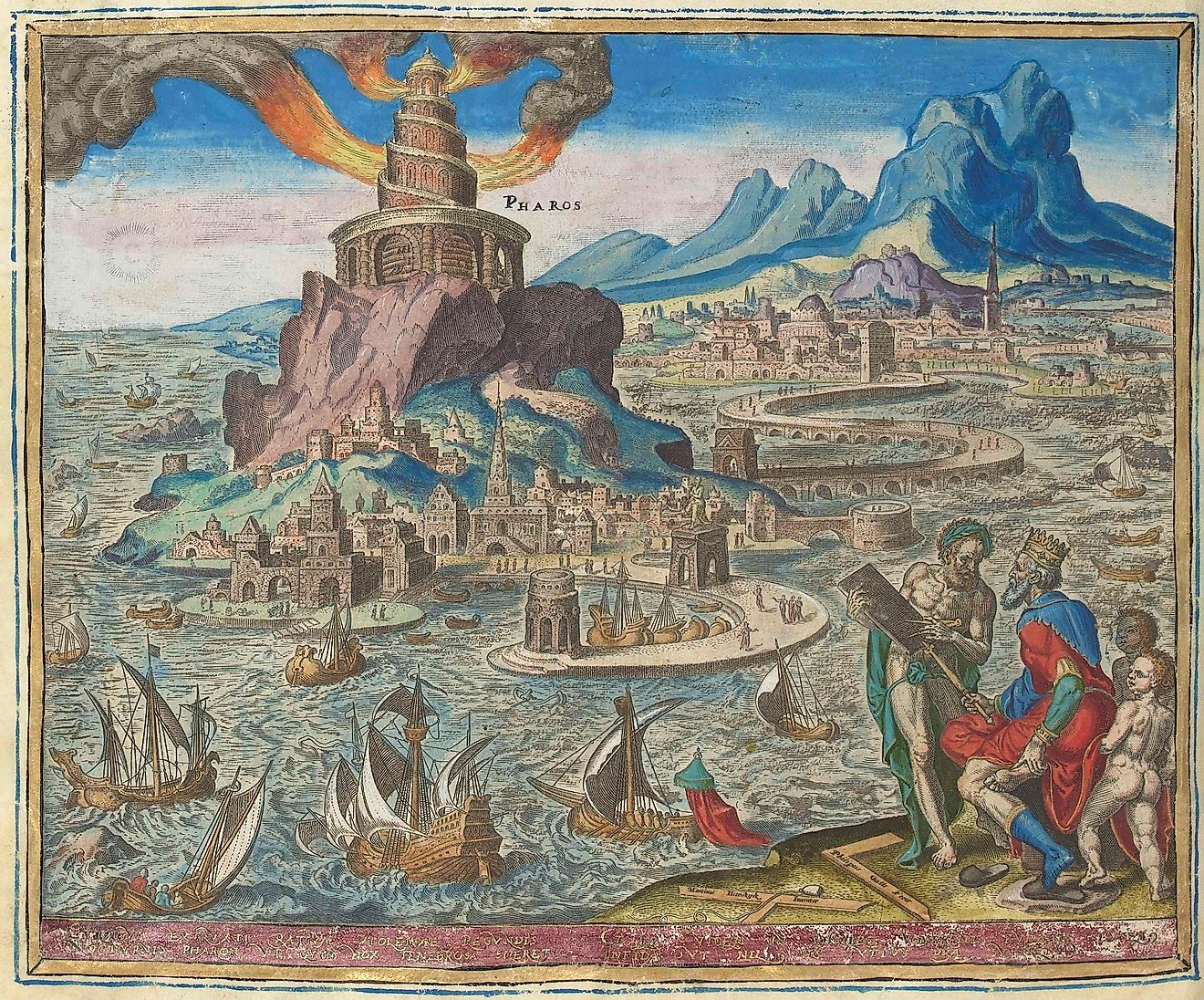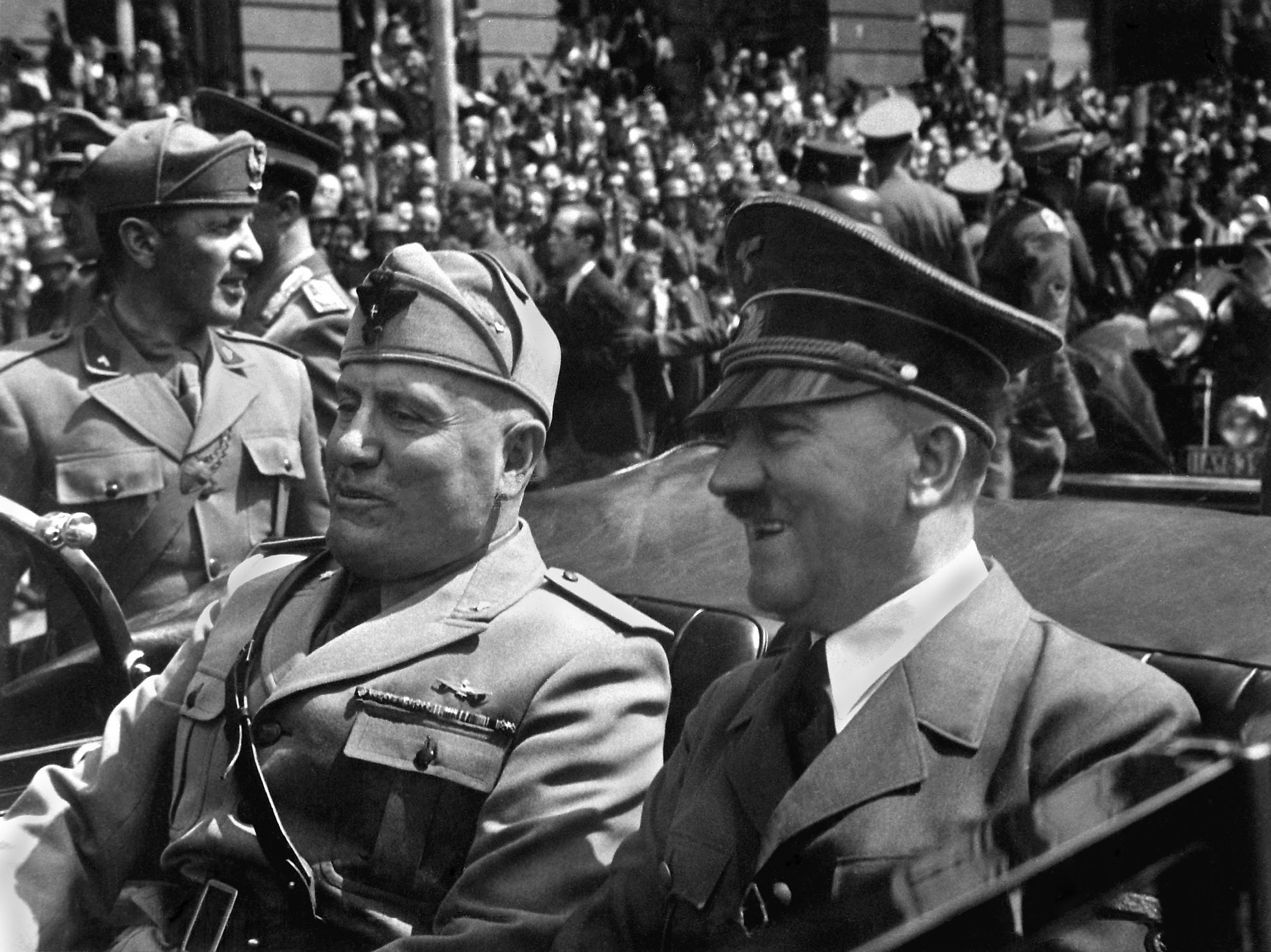
Who Were the Axis Powers in WWII?
World War Two (1939 to 1945) was fought between two military coalitions, the Allies and the Axis. The three main Allied countries were the United Kingdom (UK), the United States (US), and the Soviet Union (USSR). On the other hand, the three most important Axis countries were Germany, Italy, and Japan. These Axis powers had different reasons for entering the war and distinct experiences during the conflict. Thus, to fully understand the Second World War, it is necessary to know the stories of individual Axis countries.
Major Axis powers
Germany
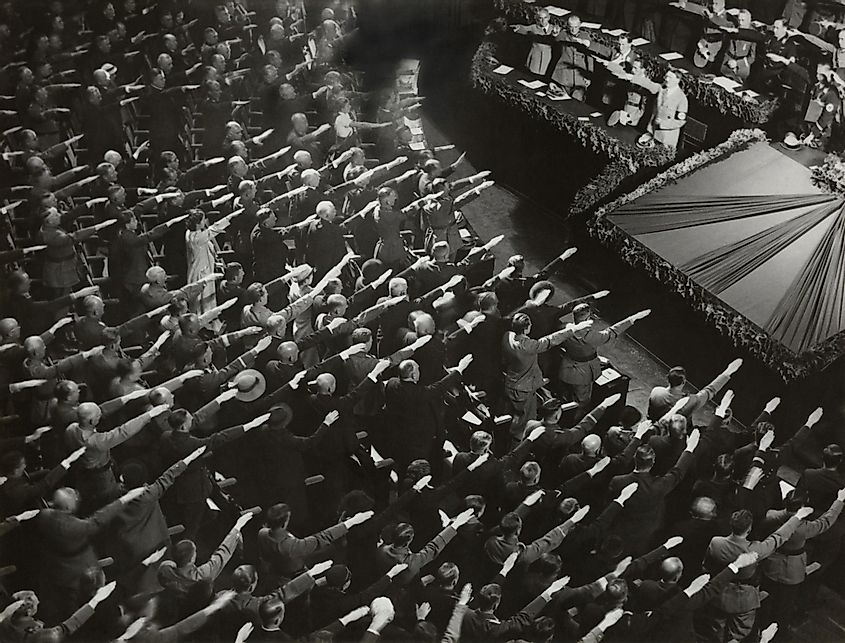
Adolf Hitler rose to power on January 30, 1933. In accordance with his belief that life was and should be violent, he quickly began to rearm Germany, as its military had been gutted following World War One. Therefore, in direct violation of the Treaty of Versailles, Hitler remilitarized the Rhineland in 1936. In 1938, Germany annexed Austria and occupied the Sudetenland, a region of Czechoslovakia that contained mostly ethnic Germans. Despite Hitler's promise that this would be the last of his imperial ambitions, the Nazis then invaded the Polish free city of Danzig in 1939, followed by the rest of Czechoslovakia.
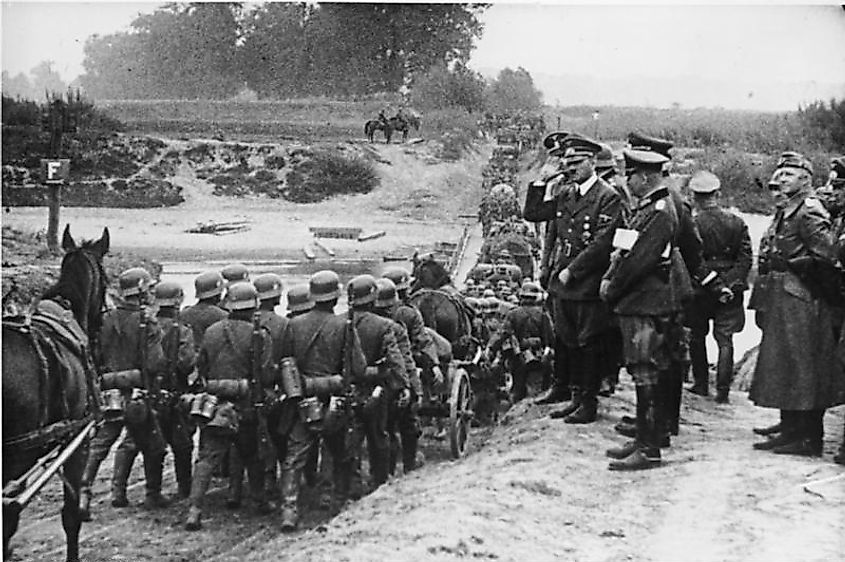
On September 1, 1939, Germany invaded Poland. This signified the beginning of the Second World War, with Britain and France subsequently declaring war on the Third Reich. After quickly defeating the Polish Army, the Wehrmacht (the German Army) swept through Denmark, Norway, the Netherlands, Belgium, Luxembourg, and France in 1940. In 1941, Germany invaded North Africa and the Balkans. However, the most consequential military campaign began on June 22 of that year, with the German invasion of the USSR. Known as Operation Barbarossa, this campaign was crucial for achieving Hitler's goal of Lebensraum (living space in the east).
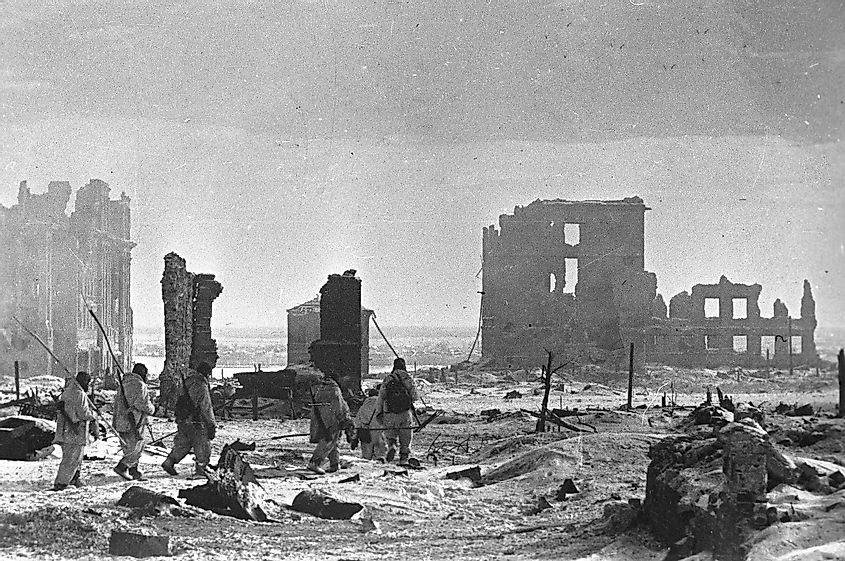
After initially making steady progress, the German Army was stopped and pushed back in 1942, perhaps most notably in the southern Soviet city of Stalingrad. Following a failed counterattack in the 1943 Battle of Kursk, the Wehrmacht was on the defensive for the rest of the war. In the summer of 1944, the Allies invaded Nazi-occupied France, thereby forcing the Germans back onto the western front. Finally, on April 30, 1945, with Soviet troops only blocks away from his bunker, Hitler committed suicide, marking the end of the war in Europe.
Italy
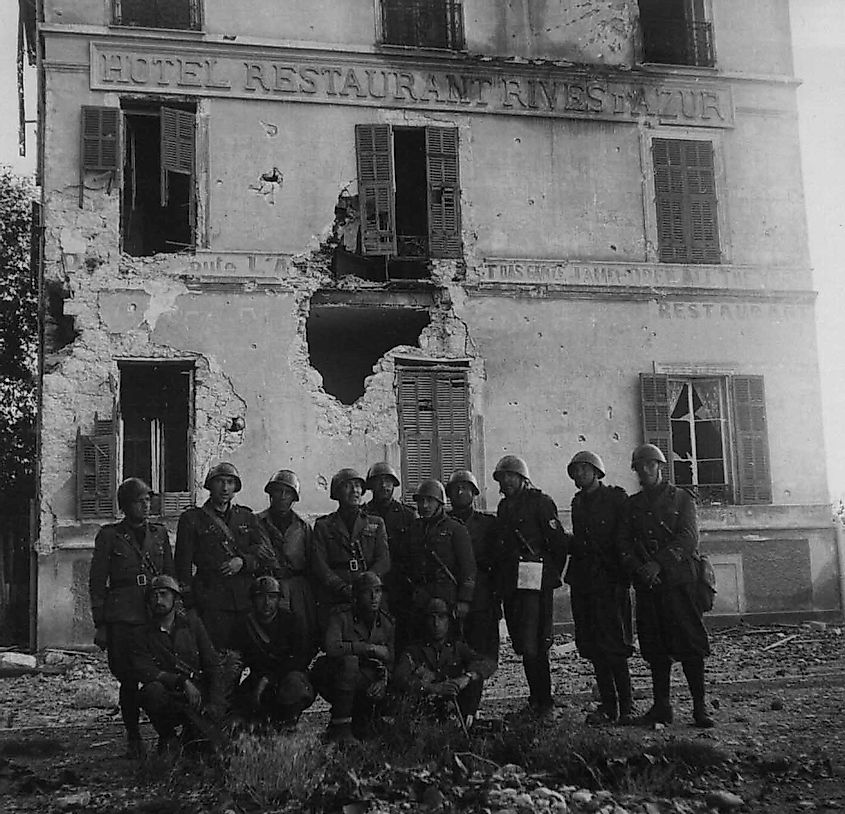
In October 1922, Benito Mussolini and his National Fascist Party overtook the Italian government, making Italy the first fascist country in Europe. Among other things, Mussolini wanted to "rebirth" the Italian nation and return to the days of the Roman Empire. However, doing so required territorial expansion. Therefore, in 1935, Italy invaded Abyssinia (known today as Ethiopia), which, following a brutal military campaign, effectively became an Italian colony in February 1937.
As World War Two began, Italy was unprepared. Nonetheless, the country entered the war on the side of Germany in the late spring of 1940, invading France, North Africa, and the Balkans. Italian troops faced significant difficulties in the latter two campaigns, forcing the Germans to come to their aid. Then, in July 1943, the Allies invaded Sicily, prompting the King of Italy to call for Mussolini's arrest. Later that year, Mussolini was rescued by the Nazis and installed as a puppet leader in the north of Italy. But, as Germany weakened, so did Mussolini's protection. Thus, on April 28, 1945, the Italian leader was executed by partisans in the northern village of Giulino.
Japan
Having undergone a period of rapid modernization and industrialization in the late 1800s, the Japanese Empire was a major world power by 1900. However, the onset of the Great Depression contributed to increasingly nationalistic, militaristic, and expansionist sentiments, particularly in the military. Therefore, in 1931, Japan occupied Manchuria, a region in northern China, followed by a full-scale invasion of the rest of the country in 1937. Throughout this invasion, tensions simmered with the Soviet Union as the two sides engaged in skirmishes on the Manchurian-Soviet border.
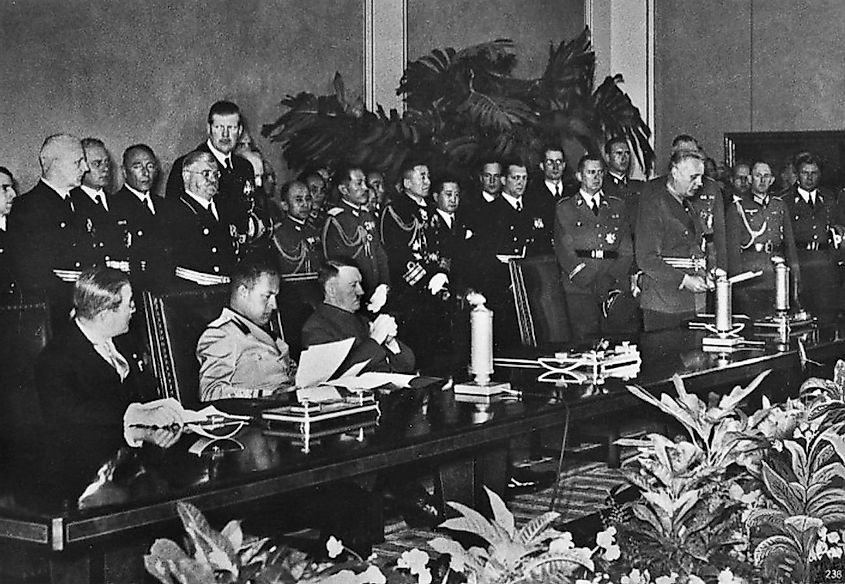
On September 27, 1940, Japan entered into the Tripartite Pact with Germany and Italy, a military alliance signifying the Axis coalition's official beginning. Then, due to crippling US sanctions, the Empire bombed the Hawaiian naval base of Pearl Harbor on December 7, 1941, marking the American entry into the war. The Japanese proceeded southward towards British Hong Kong, the Philippines, and Singapore. Despite these gains, the tide was about to turn. Indeed, following the Battle of Midway in June 1942, which ended in defeat for Japan, the Americans embarked on a massive island-hopping counter-offensive.
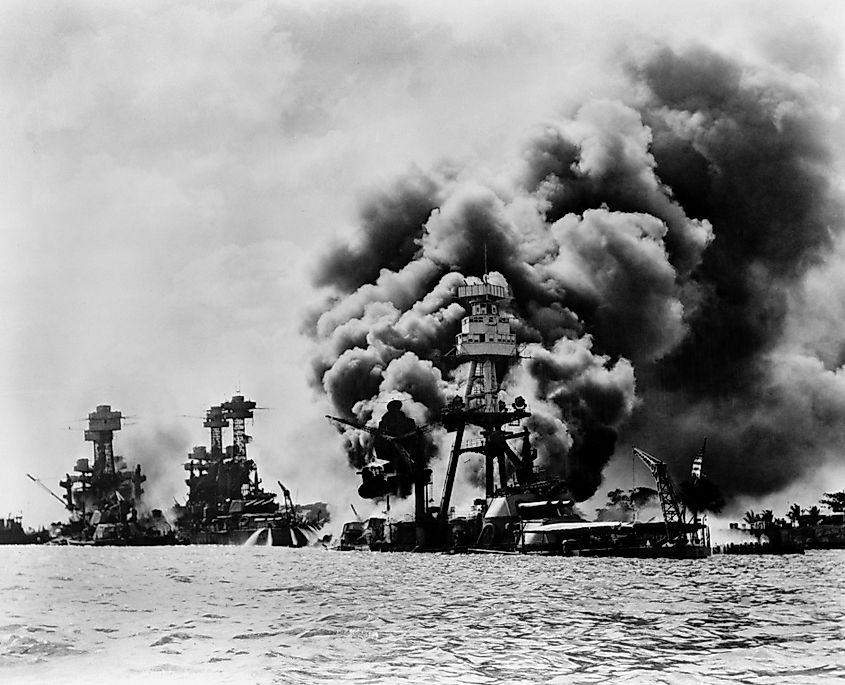
By 1945, Japan's defeat was basically inevitable. However, the ferocity and fanaticism displayed in the Battle of Iwo Jima and the Battle of Okinawa, among others, made many fear uncontrollable bloodshed if American troops launched an amphibious assault on the Japanese main islands. Therefore, the US dropped atomic bombs on the cities of Hiroshima and Nagasaki in August 1945, hoping to force a capitulation. This plan worked, as the catastrophic effects of these bombings led to Japan's surrender only days later, thereby ending the Second World War.
The Others
Hungary, Romania, Slovakia, Bulgaria, and Croatia were all either Nazi puppet states or Nazi allies during World War II. Spain was officially neutral, although it did provide minor economic and military support to the Axis. Iran was also neutral, leading to a 1941 Allied invasion and a British puppet, the young Reza Pahlavi, becoming Shah (King). Finally, the British also invaded Iraq in 1941, resulting in Abd al-Ilah replacing the Axis-sympathetic Rashid Ali al-Gaylani as Prime Minister.
Germany, Italy, and Japan were the main Axis powers and thus played critical roles in the Second World War. Germany started the European conflict. On the other hand, Italy was the source of much of Hitler's inspiration, having been the first country in Europe to turn fascist. Finally, Japan's imperial ambitions led to a catastrophic war in the Pacific.
